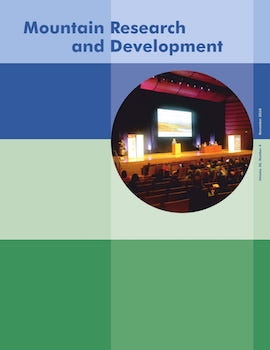Special Issue: Mountains of Our Future Earth - Perth 2015
Articles (1)
Editorial (1)
MountainResearch (7)
MountainAgenda (3)
MountainPlatform (2)
MountainMedia (7)
MountainViews (1)

No abstract available
No abstract available
Amenity Migration in the Alps: Applying Models of Motivations and Effects to 2 Case Studies in Italy
No abstract available
No abstract available
No abstract available
No abstract available
No abstract available
No abstract available
No abstract available
No abstract available
